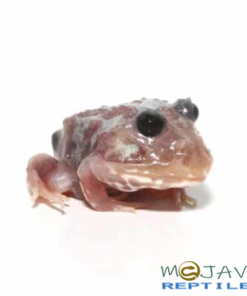Discover Your Perfect Rain Frog for Sale: Dive into the World of Exotic Amphibians!
The Most Effective Reptile Enclosures: How to Develop the Suitable Environment
Creating the ideal environment for reptiles is not almost putting them in a storage tank or room; it includes a thoughtful consideration of different factors that add to their overall well-being. From the dimension of the unit to the kind of substrate used, every element plays an essential role in offering an environment where your reptile can grow. By recognizing the details demands of your reptile types and implementing the best habitat arrangement, you can guarantee their health and wellness and happiness in bondage.
Choosing the Right Enclosure Dimension
When picking a room dimension for reptiles, it is crucial to consider their natural habits and space demands to ensure their wellness and wellness. Various reptile varieties have varying requirements when it comes to environment space.
A basic rule of thumb is to supply enough space for the reptile to show all-natural habits, such as basking, concealing, climbing, and foraging. By thoroughly thinking about the details needs of the reptile species in concern, owners can produce an appropriate and enhancing environment that advertises general wellness and motivates natural behaviors.
Establishing Appropriate Heating Elements
To guarantee the well-being and health of reptiles in their enclosures, it is vital to thoroughly establish proper burner. Reptiles are ectothermic animals, meaning they rely upon external warmth resources to regulate their body temperature level. When setting up burner in a reptile unit, it is essential to think about the particular temperature needs of the types you are caring for. Different reptiles have differing temperature needs based upon their natural environment, so it is vital to study and comprehend these requirements.
One efficient and typical home heating aspect for reptile units is a heat light or ceramic warm emitter. These heat resources can be used to produce a temperature level gradient within the unit, permitting reptiles to move in between warmer and cooler locations as required. In addition, under-tank heating pads or heat mats can be used to provide tummy warmth, which is especially helpful for reptiles that need extra heat to assist in food digestion.
Checking the temperature level within the room using a thermometer is important to ensure that the heating elements are keeping the appropriate temperature level range for your reptile. Frequently inspect and readjust the heating components as required to produce a comfortable and healthy and balanced atmosphere for your scaly good friend.
Picking Appropriate Lighting Components

Offering the Suitable Substratum
Choosing the suitable substrate is important for producing a comfortable and suitable environment for reptiles in their enclosures. Some reptiles, such as desert-dwelling species like bearded dragons, thrive on substrates like calcium sand or reptile rug, while others, like sphere pythons, favor coconut husk or aspen bed linens to maintain moisture degrees.
Furthermore, the dimension of the reptile should also affect your choice of substratum, as hatchlings might require a finer material to avoid intake. Prevent substratums that can trigger impaction, such as loose substratums like sand or crushed rock, specifically for reptiles recognized to ingest their bed linen. Consistently cleaning and replacing the substratum is vital to make certain a hygienic and clean atmosphere for your reptile. By selecting the suitable substrate, you can add to the overall health and wellness resource and well-being of your flaky friend.
Designing for Enrichment and Comfort
Thinking about the substratum's role in offering a structure for natural behaviors and preserving an ideal environment, improving the reptile enclosure with appropriate decors is important for both enrichment and convenience. Decors such as branches, rocks, hideouts, and artificial plants not only produce an extra aesthetically appealing habitat however likewise offer useful functions. Branches supply climbing up possibilities for arboreal species, while rocks can act as basking spots for warmth. Hideouts provide shelter and protection, lowering stress levels for the reptile. Synthetic plants not only enhance the looks yet additionally give concealing places and enrichment by enabling the reptile to engage and discover with its atmosphere. When embellishing the room, it is vital to think about the reptile's species-specific needs and habits to produce a his comment is here space that promotes physical and psychological health. By including a range of designs that imitate the reptile's natural habitat, owners can guarantee their family pet's comfort and stimulate their all-natural instincts, eventually resulting in a happier and much healthier reptile.
Conclusion

Producing the best habitat for reptiles is not just regarding positioning them in a container or enclosure; it involves a thoughtful consideration of different variables that add to their overall well-being.Selecting the suitable substrate is necessary for developing a suitable and comfy environment for reptiles in their enclosures. Some reptiles, such as desert-dwelling species like bearded dragons, thrive on substrates like calcium sand or reptile carpeting, while others, like ball pythons, choose coconut husk or aspen bed linen to maintain humidity degrees.
By including a selection of designs that simulate the reptile's natural environment, owners can ensure their animal's convenience and stimulate their all-natural impulses, eventually leading to a better and much healthier reptile.
In conclusion, developing the optimal environment for reptiles involves choosing the appropriate room dimension, heating components, lighting fixtures, substratum, and decors.